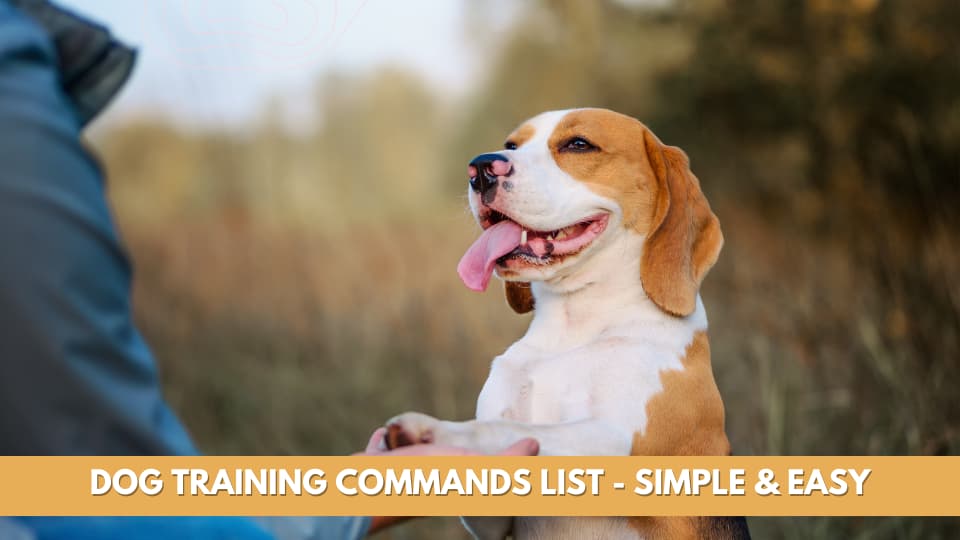Dogs are humans’ dearest companions. Owners usually start training their pets early, and our comprehensive dog training commands list can help make the training process easy and effective.
Training your dog is seen as a method of communication with them. Additionally, train and impart to your dog its own set of rules. So, the majority of owners decide to train their dogs from the time they are puppies until they are adults.
This style of dog training is well-liked worldwide. The advantages of command training for dogs are numerous, but the most unique one is that it will enable the owner and his dog to communicate with one another through words and actions.
In addition, owners will feel happier and more confident when they first meet their dogs. Dogs who have received sufficient training in obedience will feel appreciated and be more lively inside your home. These orders also assist dogs in developing a happy outlook while living at home or in public.
Canine commands The 22 best commands to teach your dog have been identified by everyone. There are a variety of commands that need to be discovered and mastered, including verbal, physical, and auditory commands. Practice these commands with your dog because it will be beneficial to the whole family owning a dog.
Consider about and given the dogs more time to train.
“Start exercising and discover a technique for teaching commands to your dogs two to three times per day for a total of 10-15 minutes each time. It will take several weeks of command training for your dogs to become accustomed to those commands. However, using dog training commands will help both you and your dog. It will remain to be utilized for a very long time.”
What Exactly Are Dog Training Commands?
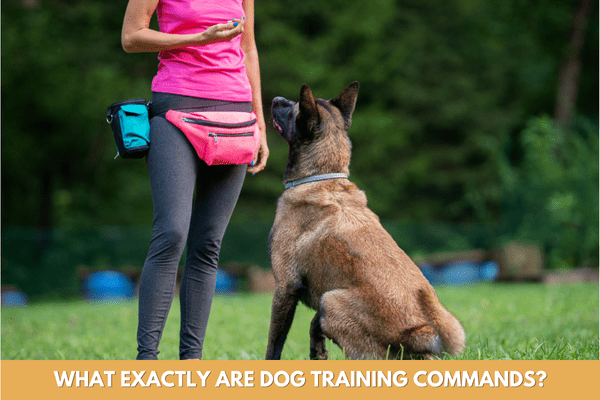
Dog training commands are specific verbal cues or gestures used to train a dog to perform certain behaviors. These commands help dogs understand what their owners are asking of them and make communication between the owner and dog easier.
Basic dog training commands include “sit,” “stay,” “come,” “down,” and “heel.” These are essential commands that every dog owner should know and can help keep dogs safe and well-behaved.
In addition to basic commands, there are also more advanced dog training commands, such as “roll over,” “play dead,” and “speak.” These commands can be fun to teach and help stimulate your dog’s mind.
To teach your pup what’s expected, use positive rewards and constancy. Praise, treats, and playing can award good conduct.
Some dog training commands, such as “stay” and “come,” can be crucial for keeping your dog safe in dangerous situations. For example, if your dog is off-leash in a park and you see a car approaching, the “come” command can be used to quickly bring your dog to safety.
Consider your dog’s breed, age, and demeanor when deciding which commands to teach.
Be patient when training your dog and break up training sessions into shorter, more frequent ones to avoid boredom or overwhelm.
Dog training commands are an essential part of being a responsible pet owner. Whether you’re teaching basic or advanced commands, positive reinforcement and consistency can help your dog understand what’s expected of them and make training fun and rewarding for you and your pet.
Why Do I Need To Train My Dog?
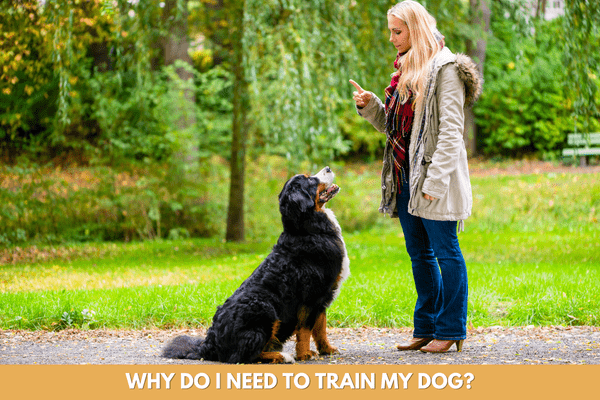
Teaching your pup is part of being a caring pet owner. It can help your pup be well-behaved and loyal and avoid behavioral issues.
Dog training can also improve your relationship with your pet. During training, you can build trust and dialogue with your pup.
Teaching can also keep your pup safe in various scenarios. By training them “come,” you can keep them from fleeing into peril or addressing strangers.
Teaching can also help your pup get along with others. If you take your pup to dog parks, training courses, or other social settings, this is extremely essential.
By teaching your dog basic dog training commands, you can also improve their overall behavior and manners. They will learn to listen to you and respond to your commands, which can make living with them easier and more enjoyable.
Dog training also stimulates the mind and prevents tedium. Training can keep dogs happy and engaged because they love learning new things.
It’s essential to remember that teaching your pup isn’t hard. Positive feedback and regularity help pets learn fast and enjoyably.
Training your dog is a key part of being a responsible pet owner. By teaching them basic dog training commands, you can help prevent behavioral problems, improve their overall behavior and manners, and strengthen the bond between you and your furry friend.
What commands for dog training do I need?
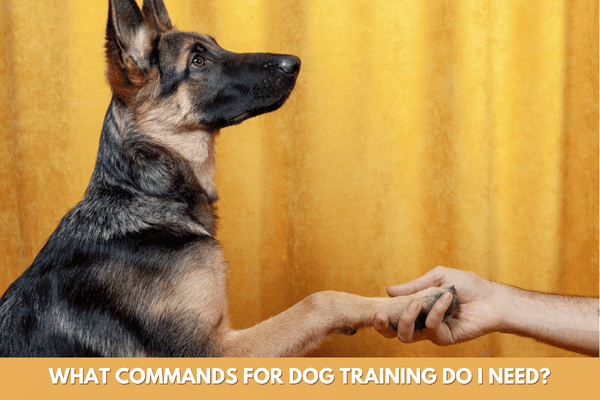
Basic dog commands can greatly improve your day-to-day life with your furry friend. As a dog trainer, there are certain commands I recommend for every dog to master.
Training options are endless after learning the basics! For instance, many area dog training schools demand basic behavior level 1 before enrolling in other classes. You can take higher training courses like agility, sport dog, nose work, and more after level 1.
The list of recommended commands begins with basic ones, like “paying attention” or “sitting,” and progresses to more advanced commands like “take it/hold it.”
In addition to useful orders, you can train your pup fun tasks like “talk on demand” or “bring a tissue or the newspaper.” Preventing table asking with “going to a dog bed and staying there while you eat” is another option.
Training your dog with basic and advanced commands can improve their behavior and strengthen the bond between you and your furry friend.
Tips For Dog Training Commands
- Start with “sit,” “stay,” and “come” before going on to more complex orders.
- Encourage your pup to learn and heed orders with gifts and praise.
- To avoid boring or overwhelming your pup, keep training lessons brief and frequent.
- Be gentle with your pup and don’t get upset if they don’t learn an order right away.
- Help your pup comprehend expectations with plain and constant vocal and hand signs.
- As your pup gets better, make the orders harder.
- Avoid bodily discipline and bad reward, which can harm your dog’s connection.
- Control your pup during training with a leash or lead.
- Try clicker training, luring, and other methods to find your dog’s best method.
- To help your pup learn orders, practice in different settings.
- As your pup improves, teach new orders in a distraction-free setting.
- Use games and leisure to keep training fun and exciting for your pup.
Basic List Of Dog Training Commands
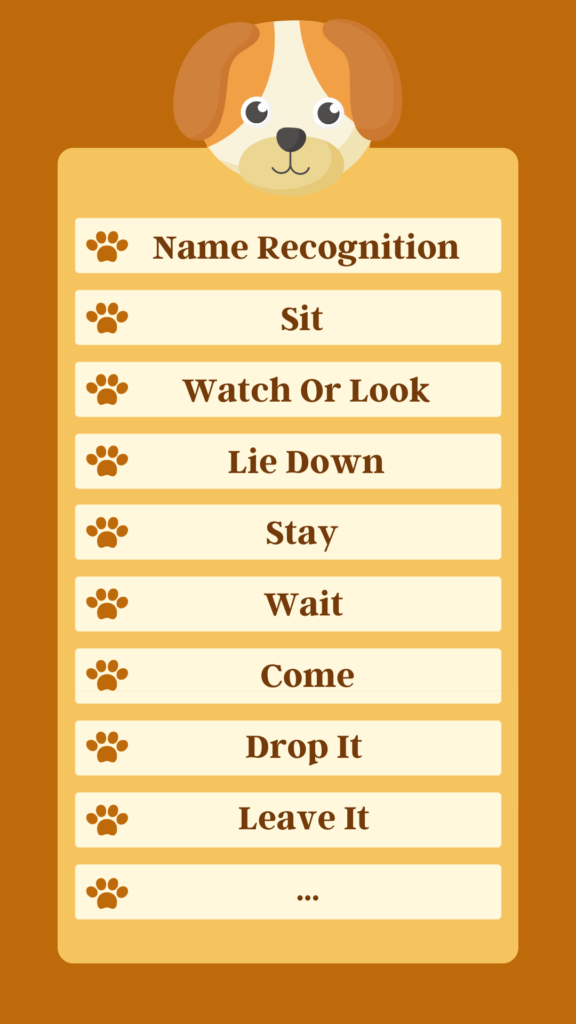
Simple commands are taught to the dog.
The earliest and simplest steps in puppy training will be a few simple commands.
Puppy training consists of 13 fundamental commands. Since this is the initial stage for the dogs, it is extremely important to learn them to be disciplined and control their aggressive tendencies. These fundamental orders for teaching dogs also develop their physical strength, which makes them more basic, durable, flexible, and nimble.
Additionally, this is the initial step toward developing intimacy between the owner and his dog. Don’t forget to train your dog on a leash in the beginning because it will help him retain the lesson. You must be familiar with the following 13 fundamental puppy training commands.
Name Recognition
Make your dog accustomed to its name.
Purpose: Dogs can know it’s their name. Create a nickname to easily train other commands.
Description: Getting someone to get accustomed to your name is the first step in training them. The owner must teach your dog the first command to instill discipline. It will also be simpler to train our pets once they can recognize their names. As a result, when you call his name, the owner will also witness the dog’s response of glancing at you. The first order, however, should be to reward them for their success by giving them some nuts, a pat on the head, or a warm hug.
Sit Command
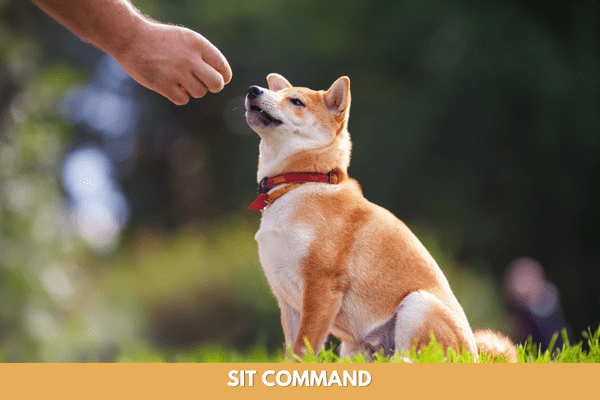
The dog got commanded to “sit”.
Purpose: This command will help in your dog’s emotional and mental control.
Description: After the name recognition command, this is the crucial and imperative command. By rewarding them with their preferred food, moving them closer to the dog’s nose, and then gradually raising your hand, the “sit” command accomplishes this. Following that, your dog will turn his head in the general direction of your hand. Once your dog has begun to understand the “sit” command, give them a treat, and don’t forget to praise them. Keep practicing this command until your dog has mastered it.
You can read the details of how to teach a dog to sit here!
Watch Or Look Command
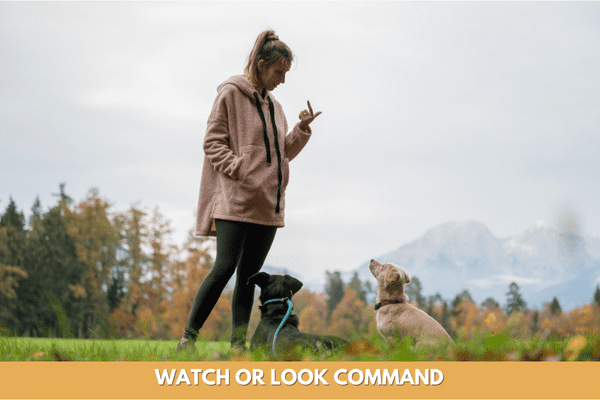
When a dog gives you a “look” or “watch”.
Purpose: This command indicates whether your dog is focusing on you.
Description: For this command, you should let the dog sniff the food in the palm of your hand. Face up and put your hand over the dog’s nose. Say “look at me” or “focus” to get the dog to focus entirely on you. Once your dog has mastered this command, don’t forget to praise or reward him with a treat.
Lie Down Command
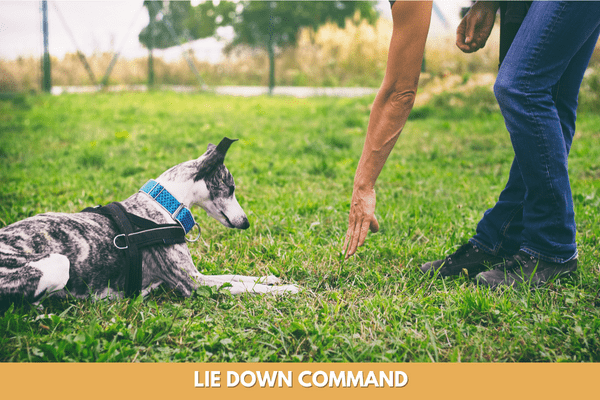
With the “lie down” command being used.
Purpose: When a dog is agitated and has to address some of its misbehavior, this command helps to calm the dog’s mind.
Description: Your dog is instructed not to move by this portion of the command. Giving them their favorite meal and slowly moving your hand toward the dog’s face and nose while holding the reward in your fist is all that is required to accomplish this. By gradually lowering your hand to the ground or lawn, you can teach your dog to sniff new items and allow them to follow you. As your dog shifts positions, address your hand across the yard or floor. Saying “down” when the dog is already lying down is a smart idea. Repetition of the first two commands and this command, until they are adept, is necessary. Rewarding the dogs is important because they are picking up the commands quickly.
Read details about this command at: How to Teach a Dog to Lay Down
Stay Command
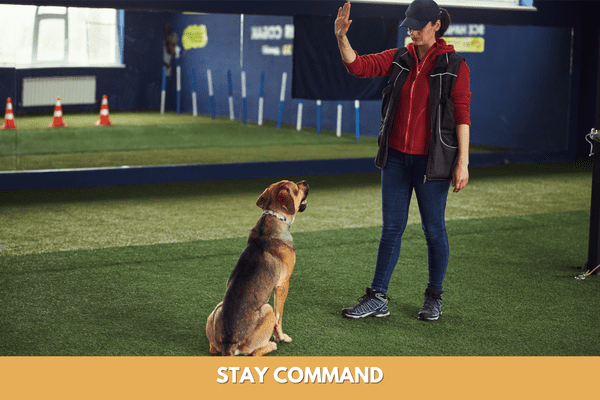
The trainer gave the dog the command “stay”.
Purpose: Your dog will be more emotional, calm, and in control, if you use the hold command.
Description: In our comprehensive dog training commands, combining “stay” and “sit” can boost its efficacy. First teach “sit,” then “stay” with the hand motion. Repeat “stay” and “sit” as you leave. Reward your pup for obeying these orders.
Read details about this command at: How To Teach A Dog To Stay: A Comprehensive Guide
Wait Command
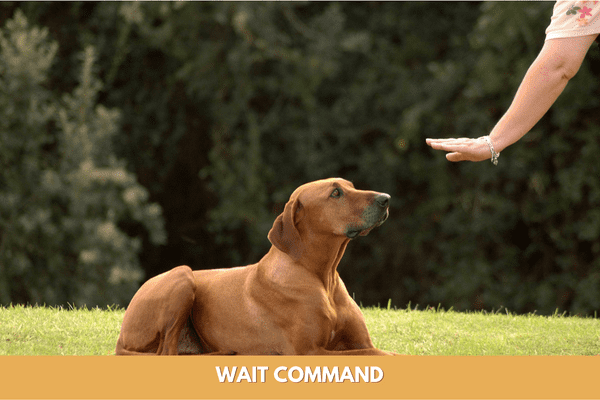
Your dog is following the order to “wait” by doing so.
Purpose: Your dogs will learn not to wander on their own with the help of this command.
Description: When your dog is outside the car or right in front of the door, say the word “sit”. Give the command “wait” then open your palm. Your dog will get used to this command more if you keep doing this action with him again. Don’t forget to give them some cookies, as this will motivate them to compliment them.
Come Command
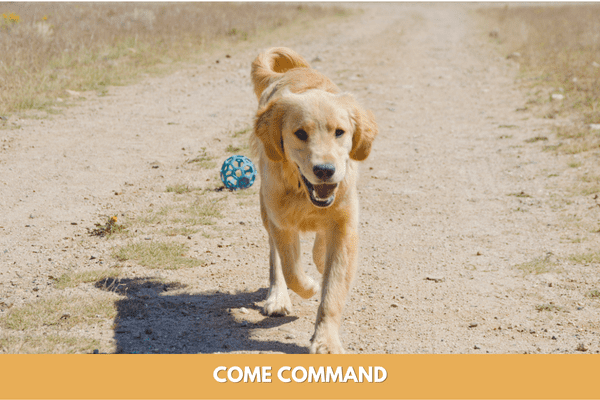
While the trainer calls “come”, the dog is giving a signal.
Purpose: The command “come” tells your dog to return to you and is a good technique to keep your dog out of trouble.
Description: In our comprehensive dog training commands, “come” is unique. Leash your pup and set a distance to give this order. Call your pup to “come” by gently pulling the lead. Your pup will approach. Repeat the order until your dog gets used to it, then give them a rub, a pat on the head, or their favorite food.
Note: In our comprehensive dog training commands, “come” is vital to training. This order prevents your pet from entering hazardous areas or addressing strangers. It can also improve your dog-human link.
Off Command
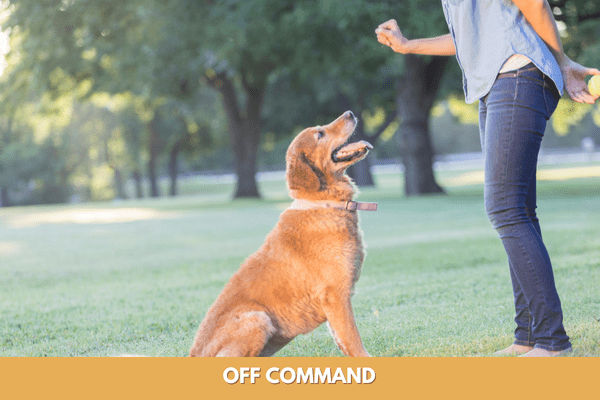
With the instructor’s supervision, the dog is given the “off” command.
Purpose: This order is quite kind to the dog. It implies that your dog has not to destroy anything or become trapped by their fur.
Description: If possible, hold out a few of their favorite cakes as a gift and wave them in front of the dog’s nose. The dog will be compelled to take it, but you must tighten your grip. Give your dog the order “off” when they take a step back. To help children visualize it and pick it up more quickly, practice this command in a room with furnishings. Do not forget to thank them.
Drop It Command
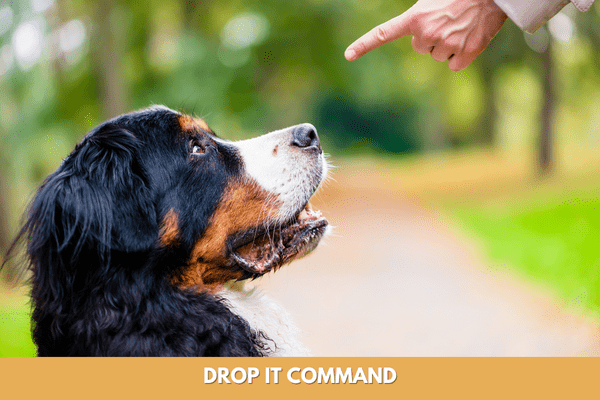
The dog “drop it” the object when the trainer gave the command.
Purpose: This command requires your dog to take anything you ask for.
Description: When instructed to do so, your dog will be prepared to grab or grab anything. Allow your dog some time to get used to this. After that, introduce a few items so they can get acquainted with them. When you move to a new location or come across an unexpected thing, the dog will immediately begin to bark, making a really special impression. Say “drop it” when the object they are holding in your mouth falls. Practice with objects gradually to aid the dog’s learning. Reward them till they understand how to train properly.
Read details about this command at: How To Teach A Dog To Drop It – Detailed Instructions
Leave It Command
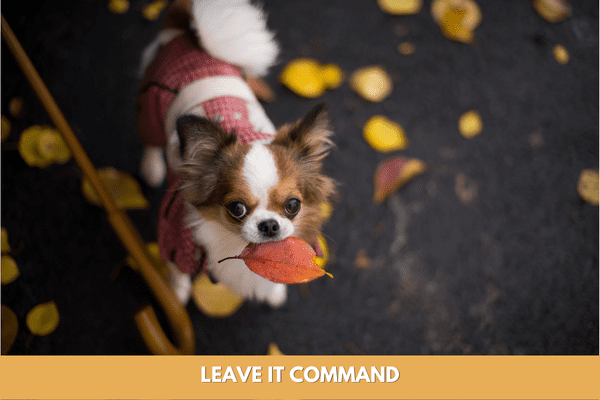
The dog obeyed the command to “leave it”.
Purpose: This command teaches your dog to leave any object at your command.
Description: The “drop it” command is exactly like this implementation. When the dog approaches with anything in its mouth, shout “leave it” since the training is the same. For your dog to learn this command, practice it in addition to the “drop it” command. Once your dog learns to expect rewards, take note of any commands.
Read details about this command at: How To Teach A Dog To Leave It: Complete Plan
No Command
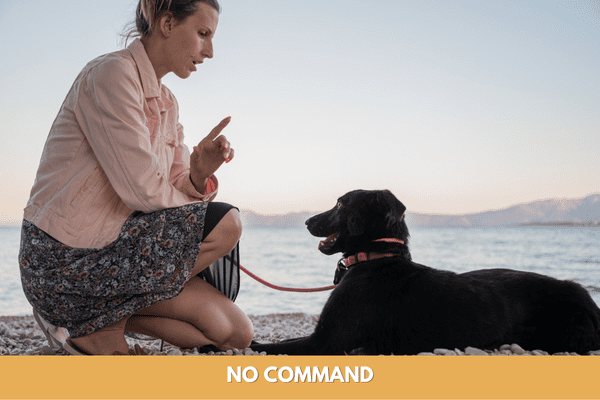
Dogs obey the instruction “no” because it could harm their health.
Purpose: To prevent your dog from approaching or consuming potentially harmful objects, use “no” commands.
Description: Because it impacts the dog’s health and digestive system, you won’t want your dog to eat anything without your consent. To avoid unexpected events, they also “no” want them to approach anyone. To allow the dog to lick or sniff the reward, hold it in both hands and gradually bring the hand with the first treat the dog likes closer to the face. To make them less interested in the first, you should then tell them “no” if they try to acquire it. This indicates that your dog has complied with your directions and displayed the required behavior. Make sure your dog understands this command completely.
Heel Command
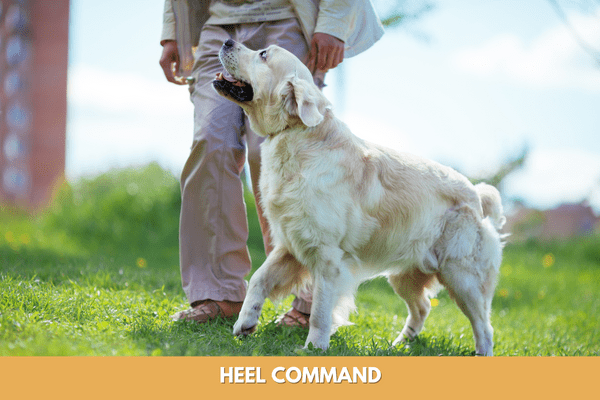
In training the dog to “heel”.
Purpose: Your dog will learn proper behavior from this command when you are around.
Description: The collar should be on them before training so that the instruction will be simpler. Keep the collar in your right hand. Your dog will lie on the side of the left that is opposite. While walking or teaching your dogs to sit, use your left hand to hold the treat and lead the way. While training the dog by your side, shout “heel” and take a few steps. Once they have mastered this instruction which is pretty simple give them some of their favorite cakes.
Handle your business
Some canines will be taught to work for a business.
Purpose: This law links word usage over time to assist business owners who outsource.
Description: Take your dog for frequent walks each time you go out to practice this command. Say the cue words, such as “pee,” “shake hands,” or “hi,” to let them know it’s time. Most of these instructions prepare individuals to start a business if they are successful. Gather and will give the dogs tons of food and toys as rewards. However, this type of training will take some time.
ADVANCE DOG TRAINING COMMANDS LIST
Many dogs will receive advanced command training after the basic commands have been completed.
There are complex commands in addition to simple instructions. Even if advanced rules may not seem novel, dogs will find them interesting. These sophisticated commands will seem unfamiliar.
Nine advanced commands will help you train your dog’s intelligence, stamina, and health. Although there will be both challenging and simple commands, there will be both. Whether it is challenging or simple, the owner should frequently exercise his dog because it is beneficial and makes your dog more docile and willing to listen to you.
Both advanced and fundamental exercises should be practiced twice or three times daily for 10 to 15 minutes each. Your dog may need some time to get acquainted with this sophisticated command because it is.
Take It Command
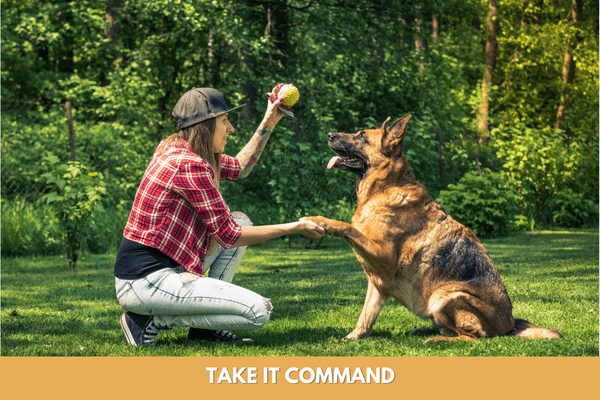
“Take it”, was said to the dog.
Purpose: This instruction teaches your dog to pick up objects.
Description: Take one of their favorite toys and hold it in front of your dog while saying the command, “take it,” and they will approach and take it. Reward your dogs with cake or some praise once they’ve gotten what you want them to.
Bed Command
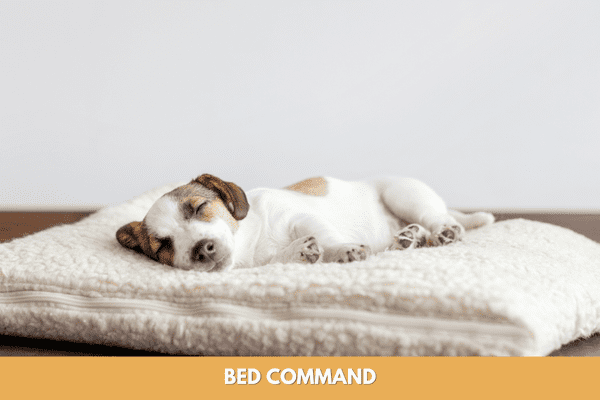
Allow the dog to lay down in its “bed” wherever it is most at ease.
Purpose: After exhausting exercises, assist your dog in recovering by rewarding them.
Description: Dogs also require sleep, making this a very important command. Put them on a leash and let them guide you to the dog’s sleeping area. A “bed” is what that is. Additionally, they sleep here. Say “bed” to them after they are in their bed to let them know this is where they sleep. Give the dogs their favorite toys or treats.
Leash Command
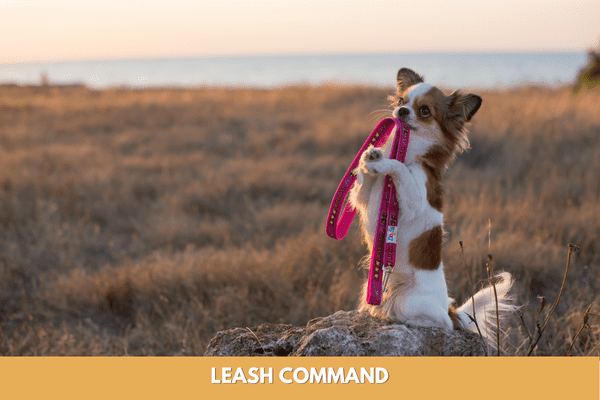
The “leash” will be given to your dog.
Purpose: This command will keep your dog safe and help him become used to wearing a leash.
Description: Then, wrap the leash around their feet once they’ve stepped over it. Make a big loop slowly and draw them toward your direction. Before the leash is removed, your dog will have to lift one paw; at this time, you should enthusiastically shout “leash,” and they will agree to wear it. To get the dog used to this command, say it again.
Lap Command
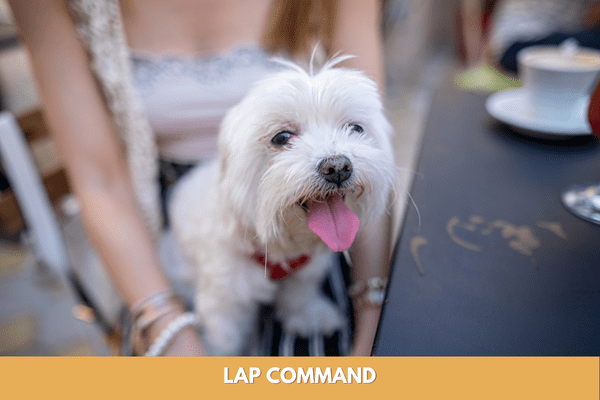
The instructor asked the dog to “lap” them.
Purpose: This command informs your dog that the bottoms of their feet need to be thoroughly washed because they are filthy.
Description: The prettiest of the aforementioned commands is to teach them to sit on a chair. On your lap, place some of their favorite food. You raise your leg while patting your lap and saying “lap.” If your dog is unable to jump, practice this command diligently and attentively since it is both adorable and challenging. Reward the dog with one or two treats when they succeed to motivate them.
Speak Command
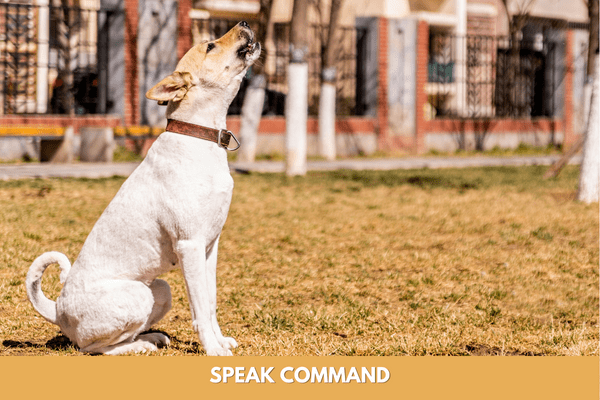
Following permission, the dog was “spoken”.
Purpose: If your dog is not inside, outside, or wearing a leash, you can use this order to assist you to find them.
Description: “Speak,” and your dog will follow you once you shout this command. Shout “talk” every time your dog barks to prevent confusion from your dog mistaking commands for random barking. Repetition of this command will help your dog learn it, so reward them when they get it right.
Quiet Command
The dog made a “quiet” request.
Purpose: This order aids your dog in managing their excessive and irritable barking.
Description: Once your dog has mastered “speaking,” teaching him to “keep quiet” will be simpler. Asking them to be “calm” while they are excessively barking is more effective than barking at them. Keep giving the dog this command until it stops barking. Giving them a hug and a piece of cake will help the dog feel better when the barking stops.
Shake Command
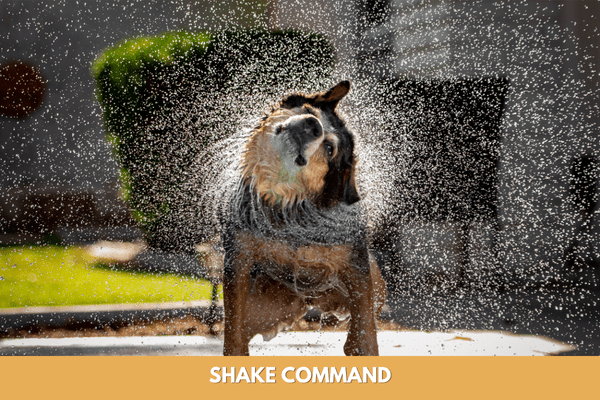
The dog actively engages in play and cheerfully carries out the required “shake” order.
Purpose: Although this command isn’t really useful, your dog will enjoy it.
Description: Simply instruct your dog to sit, ask them to lift their paws, then shout “shake” for them to shake to execute this order. However, you must instruct them to hold for two to three seconds before saying “shake” once more. Applaud them and give them a hug or head rub as a reward.
Car Command
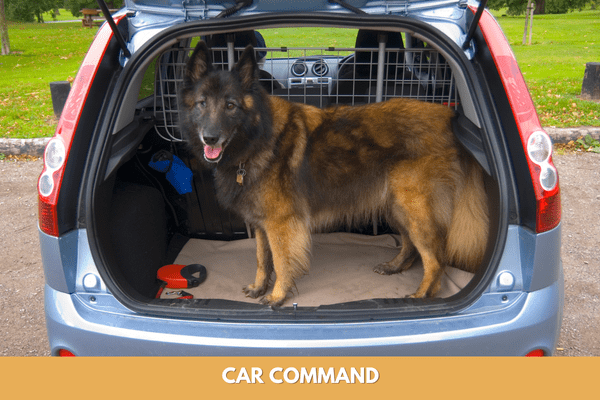
At the owner’s request, the dog was told to enter the “car”.
Purpose: This signal enables your dog to navigate the vehicle and acclimate to its surroundings.
Description: If you correctly train them, many dogs will enjoy playing in the car, but there are also some instances where the dog does not enjoy the enclosed space in the car. Leash your dog outside so they may easily access the trunk or other parts of the car. You shout “car” and place your order for food inside the desired location. Your dog will be able to enter the vehicle. But to get them habituated to it, keep repeating this order.
Belly Command
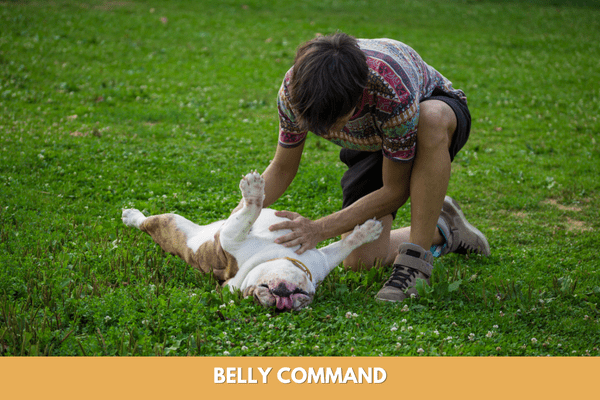
In order to play with them, owners ask their dogs to “belly”.
Purpose: Using this command, you can establish trust with your dog.
Description: First, let your dog “lie down” Let the dog lie on its side while you hold a gift in your palm, such as a favorite treat. Encourage them to lie down by moving your hand and the present to the side of their head. The bonus that reads “belly” and will give you the advantage should be set away. Hold it on your lap when your dog correctly executes this simple command.
At a young age, try teaching your dog these commands. The younger they are, the quicker and easier it is to train them. Learning these instructions will be extremely beneficial to you and your dog. It aids in the physical and mental training of your dog. not awkward in social settings and easier to like After your dog has complied with all the orders, don’t forget to treat them with their favorite food or a toy. Make sure to show your love for them by giving them hugs, head massages, and claps.
FAQs Of Dog Training Commands List:
What is the best age to start training my dog?
The best age to start training your dog is between 3-6 months old when they’re still in their socialization period and are more receptive to learning.
What is the most important dog training commands?
The “come” order is the most crucial dog training word. This order can keep your pup safe in risky scenarios like rushing into people or entering dangerous areas. It can also enhance their conduct and decorum, making it easier and more pleasant to live with them. The “come” order demands faith and dialogue between you and your pup, which can improve your link. Any sensible dog owner should train their pup “come.”
How long does it take to train a dog?
The time it takes to train a dog depends on various factors, such as the breed, age, and temperament. However, consistency and patience are key, and most dogs can learn basic commands within a few weeks.
What should I do if my dog doesn’t listen to my commands?
If your dog doesn’t listen to your commands, it’s important to remain patient and consistent with your training. Try using treats, positive reinforcement, and repetition to help them understand what you’re asking for.
Is it too late to train an older dog?
It’s never too late to train an older dog, but it may take more time and patience than training a younger dog. However, with consistent and positive training, older dogs can still learn new commands and behaviors.
Can I train my dog without using treats?
While treats can be useful for training, they’re not necessary. You can also use positive reinforcement, praise, and consistency to train your dog effectively.
Conclusion
Training your dog can be a rewarding experience for both you and your furry friend. By teaching them simple and easy commands, you can help them become well-behaved and obedient companions. Remember to be patient, consistent, and positive when training your dog, and always end every session on a positive note.
Reference:
https://puppyintraining.com/dog-training-commands/

